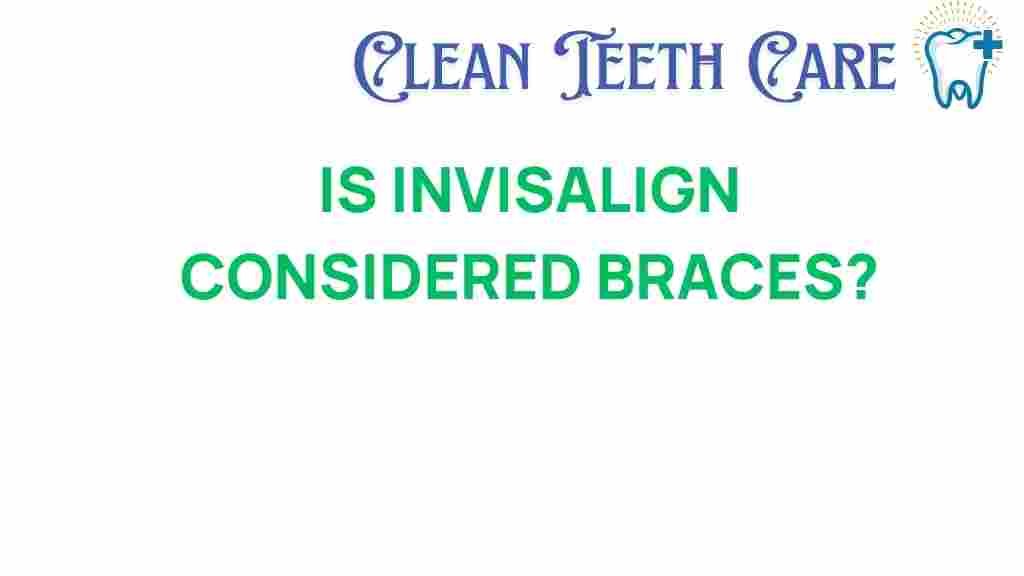Are Invisalign Aligners the New Age of Braces? Discover the Truth!
In recent years, the world of orthodontics has witnessed a significant transformation, with many patients seeking alternatives to traditional braces. Among these alternatives, Invisalign has emerged as a popular choice for those looking to perfect their smile without the conspicuous appearance of metal brackets and wires. But are Invisalign aligners really the new age of braces? In this article, we will explore the truth about Invisalign, its benefits, and how it compares to traditional braces in the realm of dental treatment and teeth alignment.
What is Invisalign?
Invisalign is a brand of clear aligners used in orthodontic treatment to straighten teeth and correct various dental issues. These aligners are custom-made from a flexible plastic material that is virtually invisible when worn. Unlike traditional braces that rely on metal brackets and wires, Invisalign aligners offer a discreet option for those looking to enhance their smile.
The Benefits of Invisalign over Traditional Braces
Choosing the right orthodontic treatment can be overwhelming, but understanding the advantages of Invisalign can help ease the decision-making process. Here are some key benefits:
- Discreet Appearance: Invisalign aligners are clear and blend in with your teeth, making them less noticeable than traditional braces.
- Comfort: The smooth plastic material of Invisalign aligners is comfortable against the gums and teeth, causing fewer irritations compared to metal braces.
- Removability: Invisalign aligners can be removed during meals and for brushing and flossing, promoting better oral health and hygiene.
- Fewer Office Visits: Invisalign treatment typically requires fewer visits to the orthodontist compared to traditional braces, making it more convenient for busy lifestyles.
- Predictable Results: The treatment plan is mapped out using advanced 3D imaging technology, allowing patients to see their expected results before starting treatment.
Understanding the Invisalign Process
To achieve a beautiful smile with Invisalign, patients must follow a specific process. Here’s a step-by-step guide:
- Initial Consultation: Visit an orthodontist who is certified in providing Invisalign treatment. They will evaluate your teeth alignment and discuss your goals.
- Customized Treatment Plan: Using digital imaging, your orthodontist will create a detailed treatment plan that outlines the movement of your teeth and the estimated duration of the treatment.
- Receiving Your Aligners: After the treatment plan is finalized, you will receive a series of custom-made aligners. Each aligner is worn for about two weeks before switching to the next in the series.
- Regular Check-ups: While fewer visits are required, you will still need to check in with your orthodontist every 6-8 weeks to monitor progress and receive new aligners.
- Completion of Treatment: Once your teeth have reached the desired alignment, you may need to wear a retainer to maintain your new smile.
Common Misconceptions about Invisalign
Despite its growing popularity, there are still misconceptions surrounding Invisalign. Let’s clear up a few:
- Only for Mild Cases: Many believe that Invisalign is only suitable for mild teeth alignment issues. However, Invisalign can treat a wide range of orthodontic conditions, including moderate to severe cases.
- Longer Treatment Time: Some think that Invisalign takes longer than traditional braces. In reality, treatment times vary per individual, and many find that Invisalign can be completed in a similar timeframe.
- Aligners are Uncomfortable: While some initial discomfort is normal, patients often find clear aligners more comfortable than traditional metal braces.
Potential Challenges with Invisalign
While Invisalign offers numerous benefits, it’s essential to consider potential challenges associated with the treatment:
- Discipline Required: Since aligners are removable, patients must ensure they wear them for at least 22 hours a day to be effective.
- Tracking Progress: It’s crucial to follow the treatment plan closely and switch aligners as directed to achieve the best results.
- Cost Consideration: Invisalign can sometimes be more expensive than traditional braces, although many dental insurance plans cover both options.
Maintaining Oral Health During Invisalign Treatment
One of the significant advantages of Invisalign aligners is the ability to maintain better oral hygiene. However, there are still best practices to follow:
- Brush and Floss Regularly: Remove your aligners and brush your teeth at least twice a day. Flossing is also essential to prevent plaque buildup.
- Clean Your Aligners: Rinse and clean your aligners regularly to prevent discoloration and odor.
- Avoid Staining Foods and Drinks: While wearing your aligners, avoid consuming foods and beverages that can stain them, such as coffee or red wine.
Conclusion: Is Invisalign the Future of Orthodontics?
Invisalign aligners represent a significant advancement in orthodontic treatments, providing a convenient, comfortable, and aesthetically pleasing option for teeth alignment. With various benefits over traditional braces, including discretion and ease of care, it’s no wonder many individuals are choosing clear aligners for their smile transformation.
Ultimately, the right choice between Invisalign and traditional braces will depend on individual dental needs, lifestyle, and preferences. Consulting with a qualified orthodontist is essential to determine the best course of action for your oral health and cosmetic dentistry goals.
If you’re interested in exploring Invisalign as an option for your orthodontic treatment, schedule a consultation with your local orthodontist today!
For further reading on orthodontics and dental treatments, you can check out this comprehensive guide.
This article is in the category Treatments and created by CleanTeethCare Team
